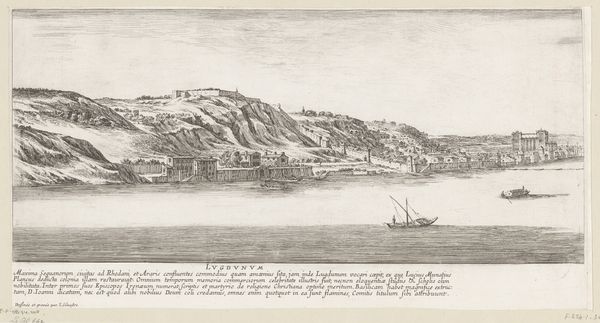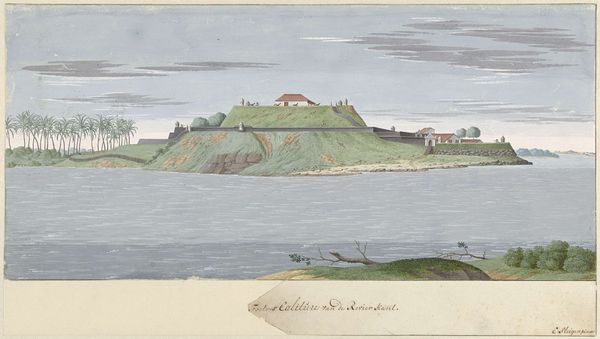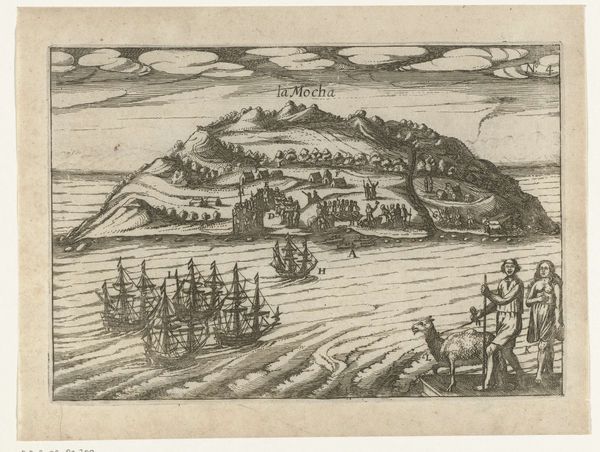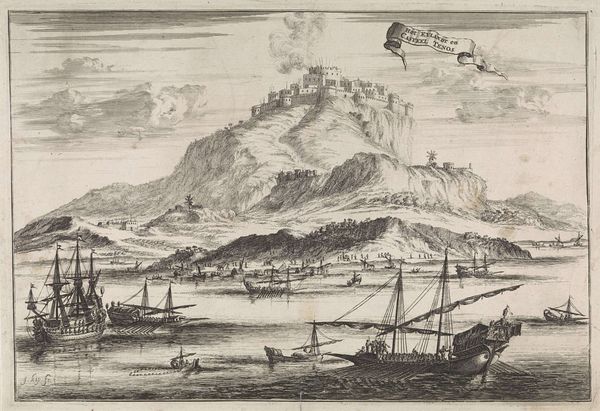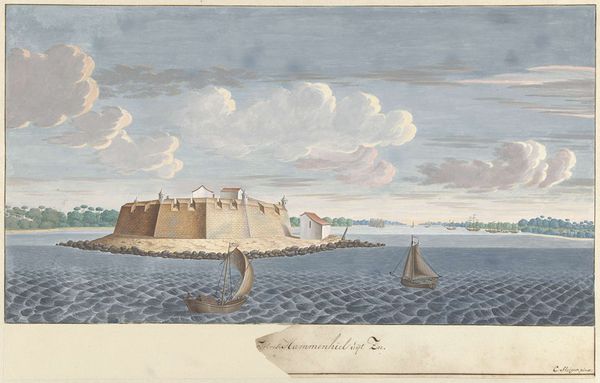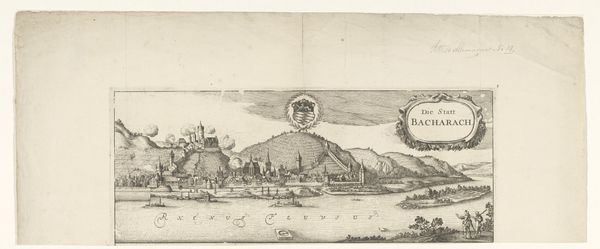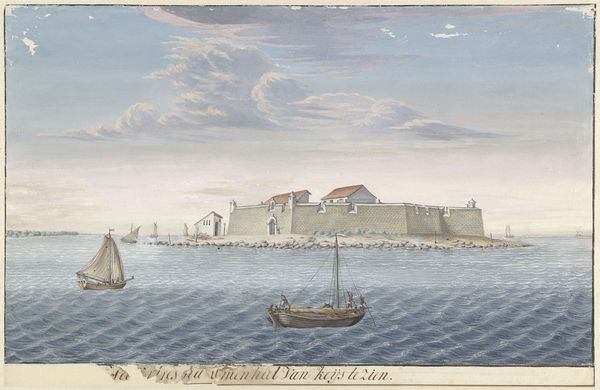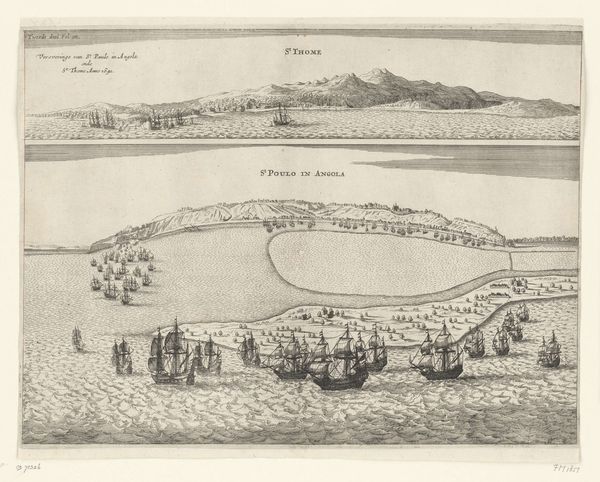
drawing, watercolor, ink
#
drawing
#
baroque
#
landscape
#
watercolor
#
ink
#
pen-ink sketch
#
sketchbook drawing
#
watercolour illustration
Dimensions: height 115 mm, width 251 mm
Copyright: Rijks Museum: Open Domain
Curator: This drawing offers a vista of the Danube near Ober-Alteich, rendered in ink and watercolor, and dating to between 1625 and 1650. The work is attributed to Wenceslaus Hollar, and it’s currently held in the collection of the Rijksmuseum. Editor: Immediately, I’m struck by its subtle melancholy, the pale wash and delicate line work seem to capture a kind of transient beauty. Curator: Absolutely, I see that melancholy interwoven with broader socio-political concerns. Landscape, at this moment, becomes inextricably tied to themes of land ownership, the effects of resource extraction, and power. The way Hollar chooses to portray the village—almost dwarfed by nature— speaks volumes about human impact on this land and our fraught negotiation with the environment. Editor: Right, but I’m drawn to how that very diminishment is achieved technically. Look at the labor involved: the delicate etching that makes up the texture of the landscape, the clear indication of material hierarchy using primarily ink and only subtle touches of watercolor. This emphasis of linear versus color informs how we understand its purpose. Was it commissioned as an estate inventory? Curator: A keen observation. Considering the historical context, it is probable that this piece intersects with issues of patronage. Hollar likely created it within a network of complex social and economic relationships that can only be understood if viewed from that perspective. The drawing operates, on one level, as a depiction of landscape but simultaneously becomes a material object intertwined with labor. Editor: And yet, look at the precision: each tiny line adds to the feeling of immense scale, creating texture, distance, and mass. It is an excellent example of translating observed material into a conceptual model, isn’t it? I am particularly intrigued by the details of those boats and figures. What purpose might those forms be intended to serve? Are these purely for our sense of depth and composition, or can we consider those shapes active material with the intent to transport its viewer through time and context? Curator: Precisely! Reflecting on this landscape through the lens of history is critical. By looking closely at the labor and materiality with a specific perspective, we can uncover narratives often missed by the eye. Editor: I think I agree. Approaching works through a focused examination of the techniques and circumstances by which they were crafted, will surely shift one’s perspective. Curator: For certain. Ultimately, engaging with Hollar's work requires critical consideration of production, circulation, and what the artist subtly included as relevant for his own historical present.
Comments
No comments
Be the first to comment and join the conversation on the ultimate creative platform.

